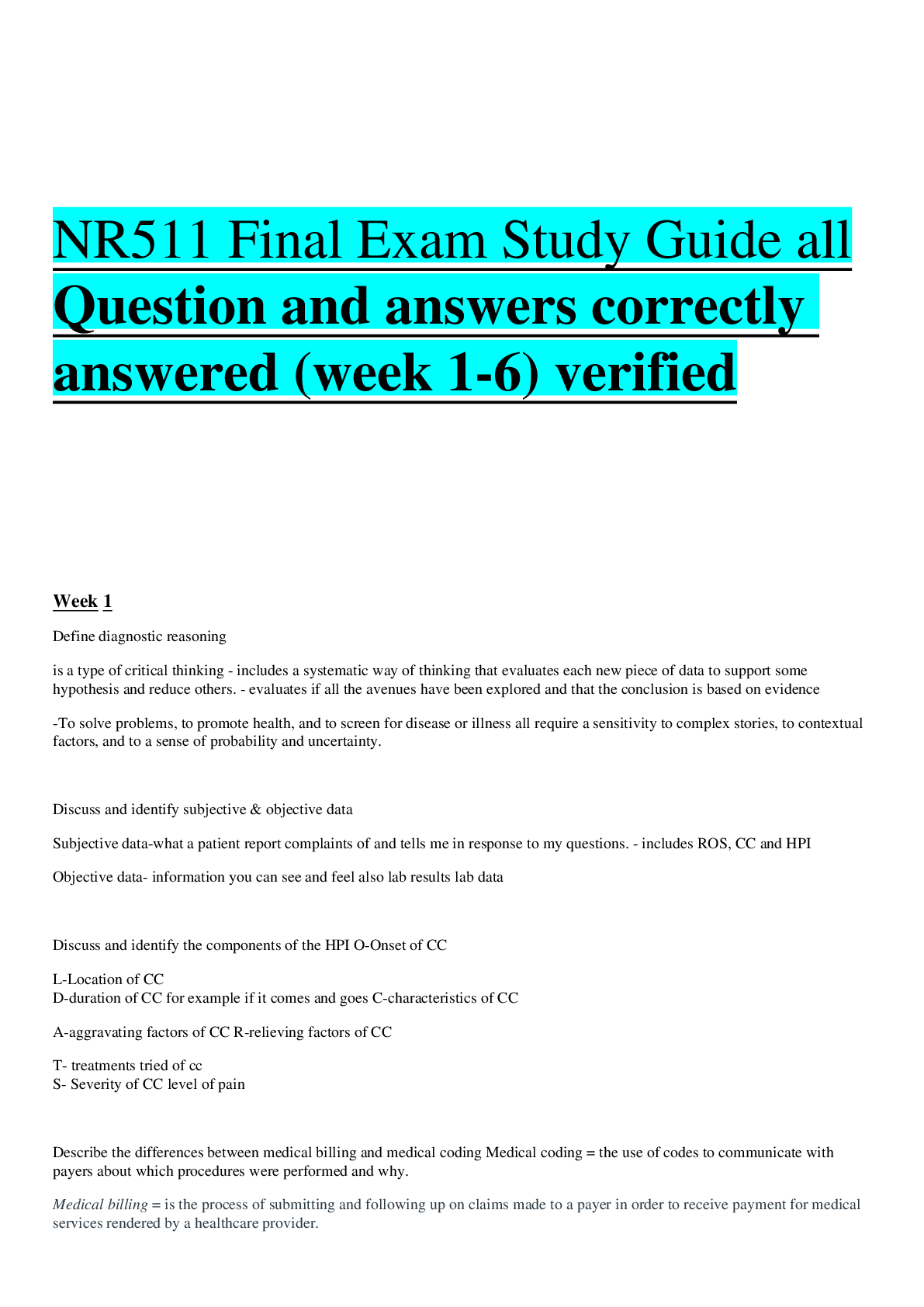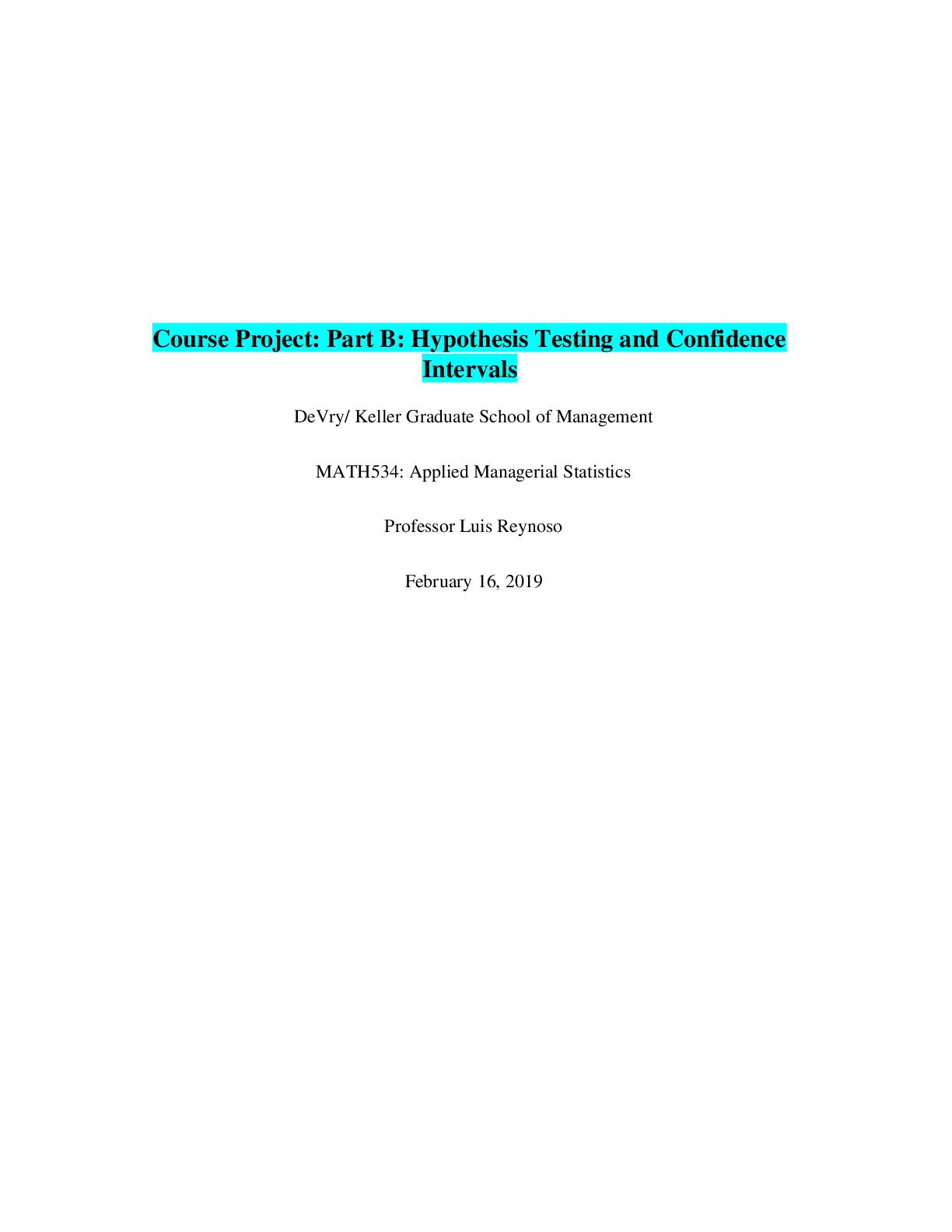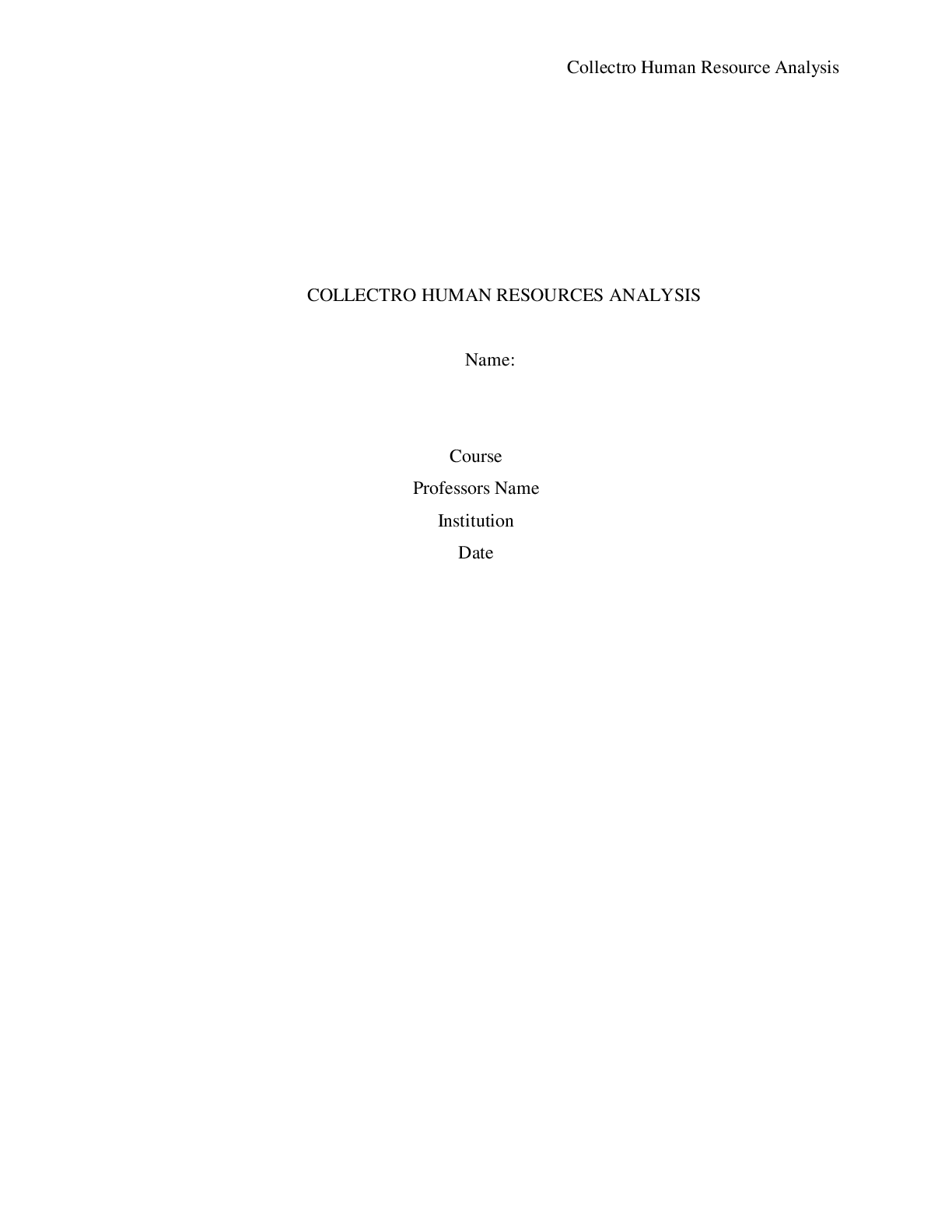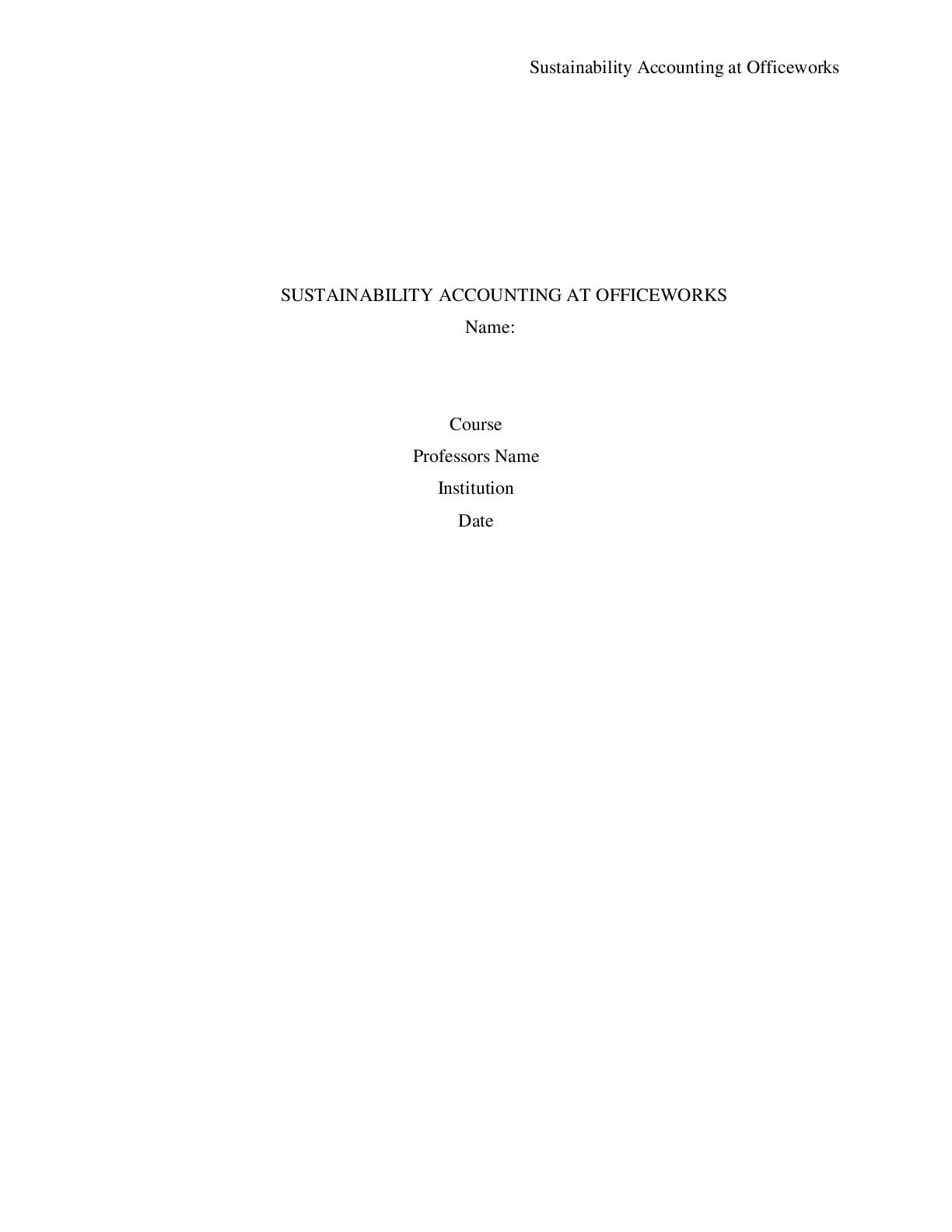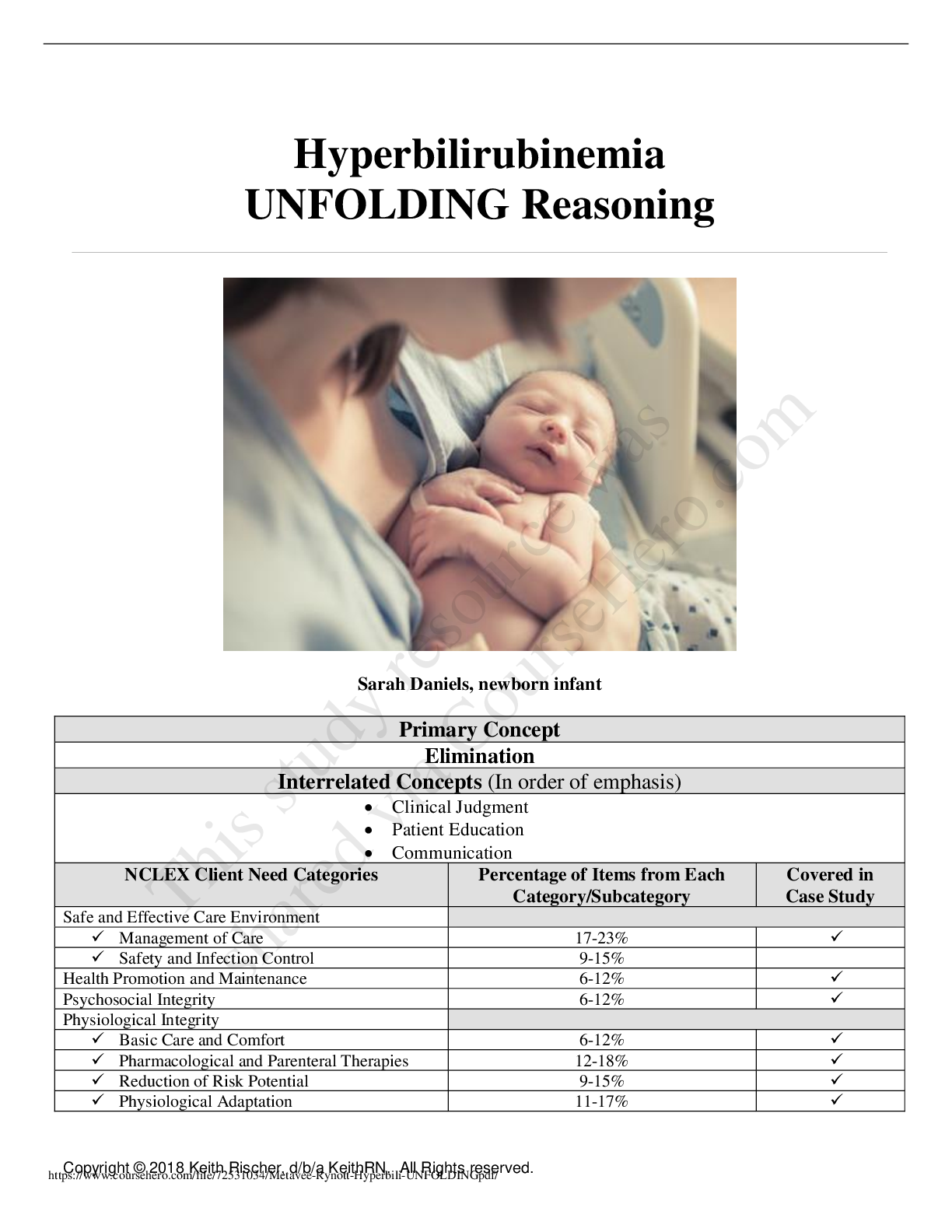*NURSING > CASE STUDY > NR507 Final Exam study guide .docx/ COMPLETE SOLUTION (All)
NR507 Final Exam study guide .docx/ COMPLETE SOLUTION
Document Content and Description Below
NR507 Final Exam study guide .docx Genitourinary Disorders: Acute Renal failure: • is reversible • determining prognosis- kidneys respond to diuretic with good output; this indicates that ... kidneys are functioning well Acute Pyelonephritis: • diagnosing by clinical symptoms alone can be difficult; can be similar to cystitis • Diagnosis established by: urine culture, UA (WBC casts indicates pyelonephritis, but may not always be present), signs and symptoms, complicated pyelonephritis requires blood cultures and urinary tract imaging Renal Calculi: • Renal stones • Goals of treatment: manage acute pain, promote passage of stone, reduce size of stone already formed, prevent new stone formation Chronic renal failure: • Review who is a candidate for dialysis • CKD is the progressive loss f renal function associated with systemic diseases such as HTN, diabetes mellitus (most significant risk factor), systemic lupus erythematosus, or intrinsic kidney disease • CKD stage is determined by estimates of GFR and albuminuria • Review 5 stages of CKD • Once stage IV is reached, progression to stage V is inevitable as well as dialysis or kidney transplant GERD: • Warning signs of GERD include: symptoms over the age of 50 • Dysphagia (difficulty swallowing food) • Odynophagia (pain on swallowing) • Nausea and vomiting • Weight loss • Melena • Early satiety (feeling full after eating very little food) Hiatal hernia: • Hiatal hernias are often asymptomatic • Generally, a wide variety of symptoms develop later in life and are associated with other GI disorders, primarily GERD • Sliding hiatal hernia: treatment is usually conservative. The individual can diminish reflux by eating small, frequent meals and avoiding a recumbent position after eating. Abdominal supports and tight clothing are avoided, and weight control is recommended for obese individuals. Duodenal Ulcer: • The characteristic manifestation os a duodenal ulcer is chronic intermittent pain in the epigastric region • The pain begins 30 minuted to 2 hours after eating, when the stomach is empty • It is not unusual for pain to occur in the middle of the night and disappear by morning Peptic Ulcer Disease: • A peptic ulcer is a break or ulceration in the protective mucosal lining of the lower esophagus, stomach, or duodenum • least likely to occur in the large intestine Neurobiological Disorders: Major Depressive Disorder: • SSRI's are the standard first-line treatment for major depression • Initial selection of an antidepressant includes: assessment of a person's symptoms, age, side effects, safety, and cost Social Anxiety Disorder: • Key features: fear and avoidance of social situations, for example, the anxious person may feel very uncomfortable having a conversation or interacting with others and very conscious of being scrutinized and humiliated or rejected by others Schizophrenia: • Schizophrenia symptoms are classified into positive, negative, and cognitive categories • Positive symptoms: hallucinations, formal thought disorder, and bizarre behavior • Negative symptoms: flattened affect, alogia, anhedonia, attention deficits, and apathy. • Cognitive symptoms: the inability to perform daily tasks requiring attention and planning. • Diagnosis: advanced neuroimaging techniques have revealed structural brain abnormalities in schizophrenia. A consistent finding is the enlargement of the lateral and third ventricles and the widening of frontocortical fissures and sulci. Endocrine Hypothyroidism: • Most common disorder of thyroid function • Affects between 0.1% and 2% of the US population • More common in women and the elderly Thyroid-stimulating hormone: • TSH is released by the anterior pituitary • Review the hypothalamic-pituitary axis • Thyroid-releasing hormone (hypothalamus) Hyperthyroidism-Grave's Disease: • Two categories of ophthalmopathy associated with Grave's disease are: • functional abnormalities: resulting from hyperactivity of the sympathetic nervous system division of the autonomic nervous system (lag of the globe on upward gaze or a lag of the upper lid on downward gaze) • infiltrative changes: involving the orbital contents with enlargement of the ocular muscles. These changes affect more than half of the individuals with Graves disease. Increased secretion of hyaluronic acid, adipogenesis, inflammation, and edema of the orbital contents result in exophthalmos (protrusion of eyeball), periorbital edema, and extraocular muscle weakness leading to strabismus and diplopia (double vision). • Two most distinguishing factors of Grave's disease is pretibial myxedema and exophthalmos. • Treatment is directed at controlling excessive TH production, secretion, or action and includes antithyroid drug therapy (methimazole or propylthiouracil), radioactive iodine therapy (absorbed only by thyroid tissue causing death of cells), and surgery. • The goal of radioactive iodine ablation for the treatment of Grave's disease is to destroy overactive thyroid tissue. Hypothyroidism: • hormone replacement therapy with the hormone levothyroxine is the treatment of choice for hypothyroidism Type 1 Diabetes: • Environmental factors associated with Type 1: • viral infections, particularly enterovirus, coxsackievirus, and other infections • Helicobacter pylori • exposure to cows milk proteins • lack of vitamin D Diagnostic Criteria for Diabetes: • The diagnostic criteria for DM according to the American Diabetes Association is: Hemoglobin A1C greater than or equal to 6.5% Actions of Insulin: • insulin promoted glucose uptake mostly in the liver, muscle, and adipose tissue Autonomic Neuropathy: • complication of diabetes • Includes slowed GI symptoms- decrease esophageal motility, gastroparesis, delayed gastric emptying Hypoglycemia: • Neurogenic reactions occur when the decrease in blood glucose level is rapid and presents with: Tachycardia, palpitations, diaphoresis, tremors, pallor, and arousal anxiety. Hyperparathyroidism: • Hyperparathyroidism is characterized by stimulation of the parathyroid gland in response to hypocalcemia Hypercalcemia: • Hypercalcemia and hypophosphatemia may be asymptomatic or affected individuals may present with symptoms related to the neuromuscular changes that include paresthesias and muscle cramps. • Patients with hypercalcemia can have low bone density that is most noted in the distal one-third of the radius. Hypoparathyroidism: • Inhibits PTH secretion • Hypomagnesemia may be related to chronic alcoholism, malnutrition, malabsorption, increased renal clearance of magnesium caused by the use of aminoglycoside antibiotics, or certain chemotherapeutic agents, or prolonged magnesium-deficient parenteral nutritional therapy. Hypocalcemia: • Symptoms include: dry skin, loss of body and scalp hair, hypoplasia of developing teeth, horizontal ridges on the nails, cataracts, basal ganglia calcifications, bone deformities, and bowing of the long bones. Hypercortisolism: • Glucose intolerance is associated with hypercortisolism • Glucose intolerance occurs because of cortisol-induced insulin resistance and increased glucogenesis and glycogen storage by the liver • Cushing's syndrome is characterized by patterns of fat deposition have been described as truncal (central) obesity, moon face, and buffalo hump Adrenal Crisis- Hypocortisolism: • onset of adrenal crisis is signified by hypotension • hypotension can progress to complete vascular collapse and shock. This is known as adrenal crisis, and develops with undiagnosed disease, acute withdrawal of glucocorticoid therapy, or the occurrence of infection or other comorbid stressful events. Primary Hypocortisolism- Adrenal Insufficiency: • labwork that indicates primary hypocortisolism: serum and urine levels of cortisol are depressed with primary hypocortisolism, and ACTH levels are increased. • When prescribing cortisol, NP should keep in mind: Acute stressors (e.g. infection, surgery, or trauma), additional cortisol must be administered to approximate the amount of cortisol that might be expected to be secreted if normal adrenal function were present Neurodegenerative Disorders: Alzheimers Disease: • Decreased short term memory occurs with mild cognitive decline as a result of a reduced hippocampus size Parkinsons Disease: • Symptoms associated with bradykinesia is shuffling gait • other symptoms: resting tremor, rigidity, postural disturbance, dysarthria, dysphagia Demyelating Disease: Multiple sclerosis: • risk factors that may be involved in the development of MS include smoking, vitamin D deficiency, and Epstein Barr Virus Febrile seizures: • One possibility for the development of febrile seizures is that neurons are excited by decreased CO2 levels caused by hyperventilation during febrile state Headache syndromes: • Review in general 1. Cluster headache is characterized by unilateral trigeminal distribution of severe pain with ipsilateral autonomic manifestations, including tearing on the affected side, ptosis of the ipsilateral eye, and congestion of nasal mucosa; it occurs in one side of the head primarily in men between 20 and 50 years of age, The pain may alternate sides with each headache episode and is severe, stabbing, and throbbing; pain is often referred to the midface and teeth. 2. Migraine is an episodic neurologic disorder whose marker is headache lasting 4 to 72 hours. It is diagnosed when any two of the following occur: unilateral head pain, throbbing pain, pain worsens with activity, moderate or severe pain intensity; and at least one of the following: nausea and/or vomiting, photophobia, and phonophobia. 115 Migraine is broadly classified as (1) migraine with aura with visual, sensory, or motor symptoms; and more commonly, (2) migraine without aura (most common) and (3) chronic migraine. 3. Tension-type headache (TTH) is the most prevalent type of recurrent headache. It is not vascular or migrainous headache. The average age of onset is during the second decade of life. It is usually mild to moderate bilateral headache with sensation of a tight band or pressure around the head. Bell's Palsy: • Bell's Palsy is associated with cranial nerve VII paralysis and results in facial asymmetry and inability to close eye, smile, or frown on the affected side. • Trigeminal neuralgia is associated with compression of Cranial nerve V and results in severe and sharp stabbing pain that can worsen with chewing. Bacterial meningitis: • Characterized by clinical manifestations of systemic infection include fever, tachycardia, and chills. The clinical manifestations of meningeal irritation are severe throbbing headache, severe photophobia, nuchal rigidity, and positive Kernig and Brudzinski signs. Cerebrovascular Accident: • Review signs and symptoms depending on the artery infarcted • For example: Infarct in ACA will result in motor: contralateral paralysis and paresis (greater in foot and thigh) • Sensory deficits associated with a basilar artery infarct include contralateral loss of vibratory sense, sense of position with dysmetria, loss of two-point discrimination, impaired rapid alternating movements. Dermatological Conditions: Rosacea: • there is a familial tendency, and several genes have been identified. Neurovascular dysregulation, infection, and factors that trigger altered innate and adaptive immune response are involved (i.e. chronic sun exposure and damage, heat, drinking alcohol or hot beverages, hormonal fluctuations, Demodex folliculorum (mites) colonization, and mental stress and anxiety). Melanoma: • Most aggressive skin cancer; thickness of the lesion impacts prognosis. Plaque Psoriasis: • The typical lesion of plaque psoriasis is a well-demarcated, thick, silvery, scaly, erythematous plaque surrounded by normal skin that can appear anywhere on the body. [Show More]
Last updated: 1 year ago
Preview 1 out of 7 pages

Reviews( 0 )
Document information
Connected school, study & course
About the document
Uploaded On
Jul 23, 2021
Number of pages
7
Written in
Additional information
This document has been written for:
Uploaded
Jul 23, 2021
Downloads
0
Views
30

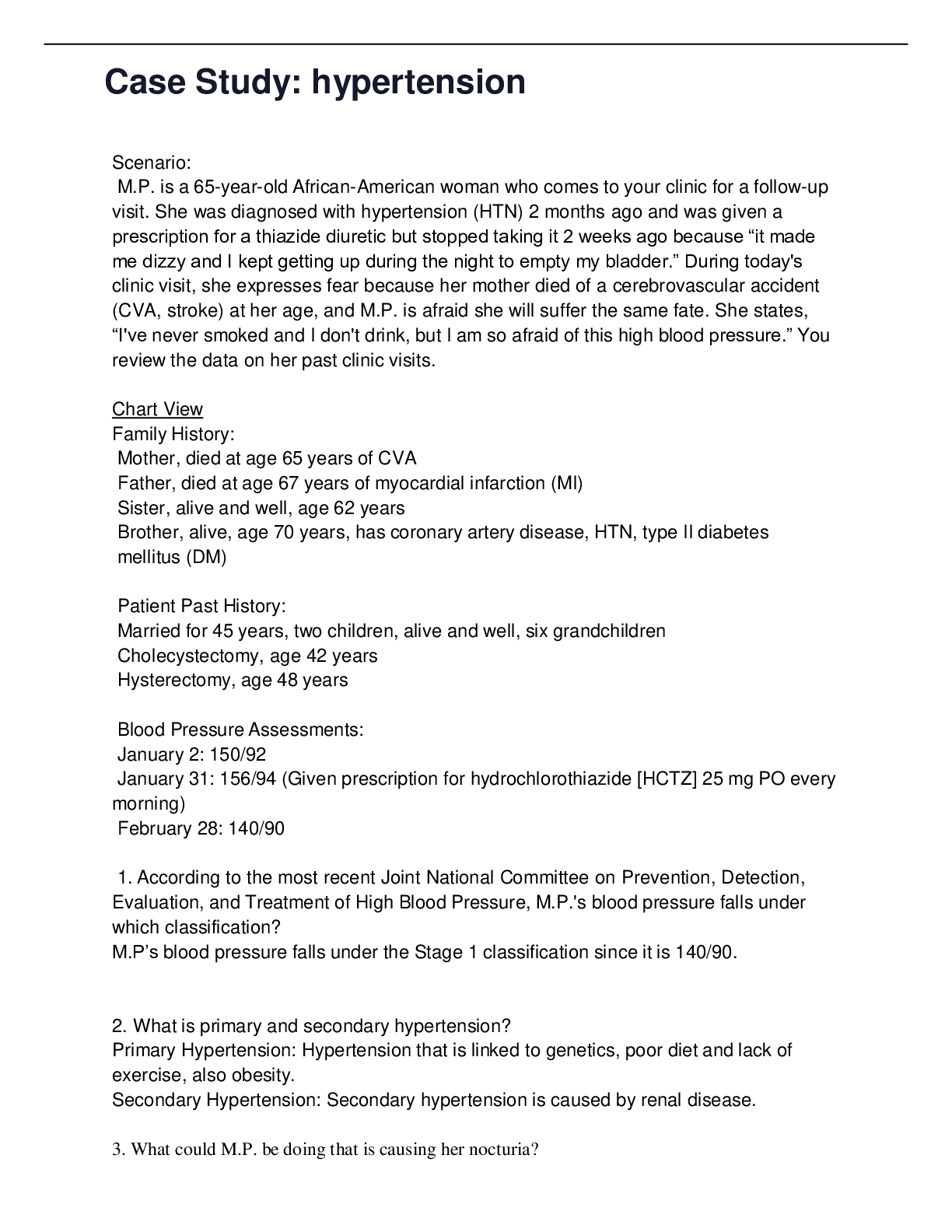





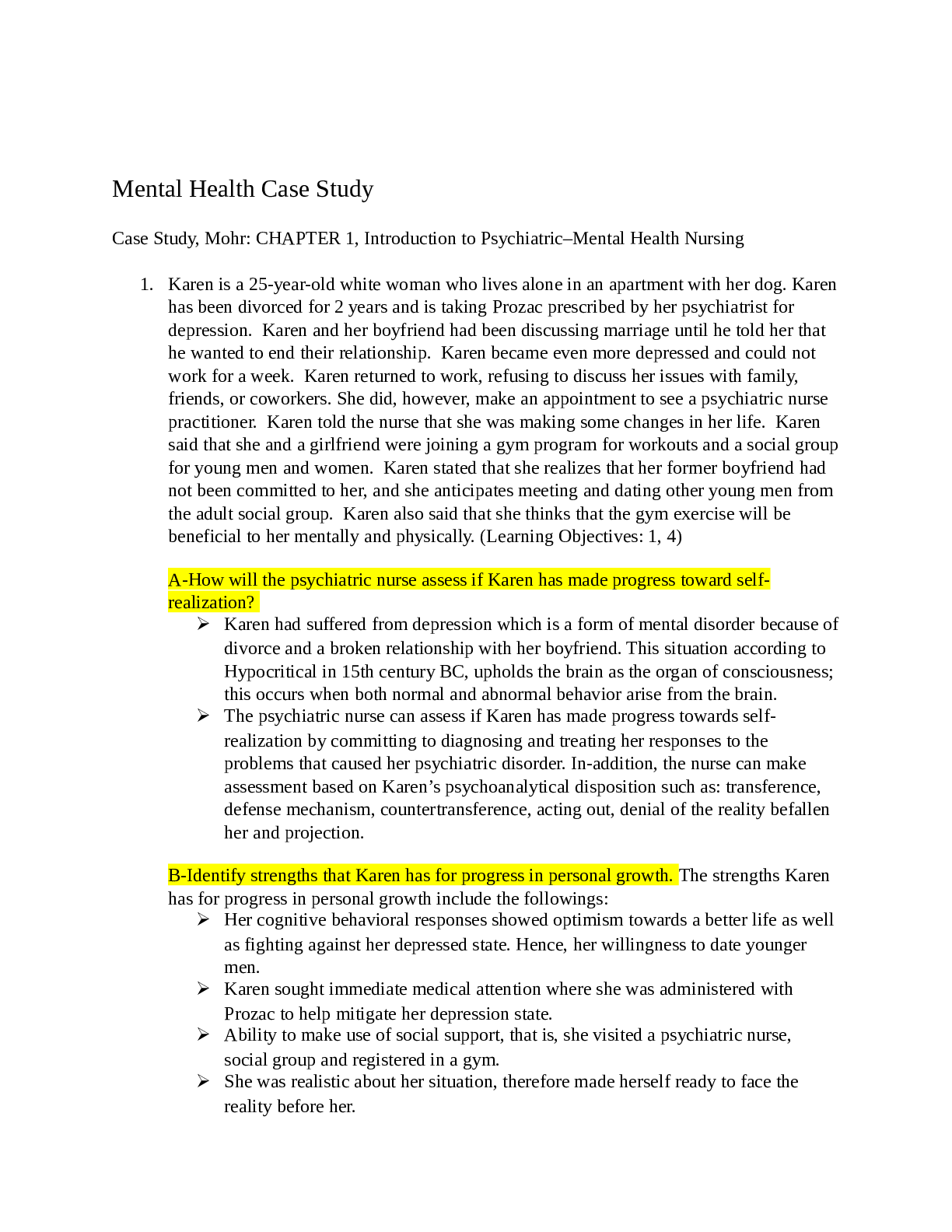
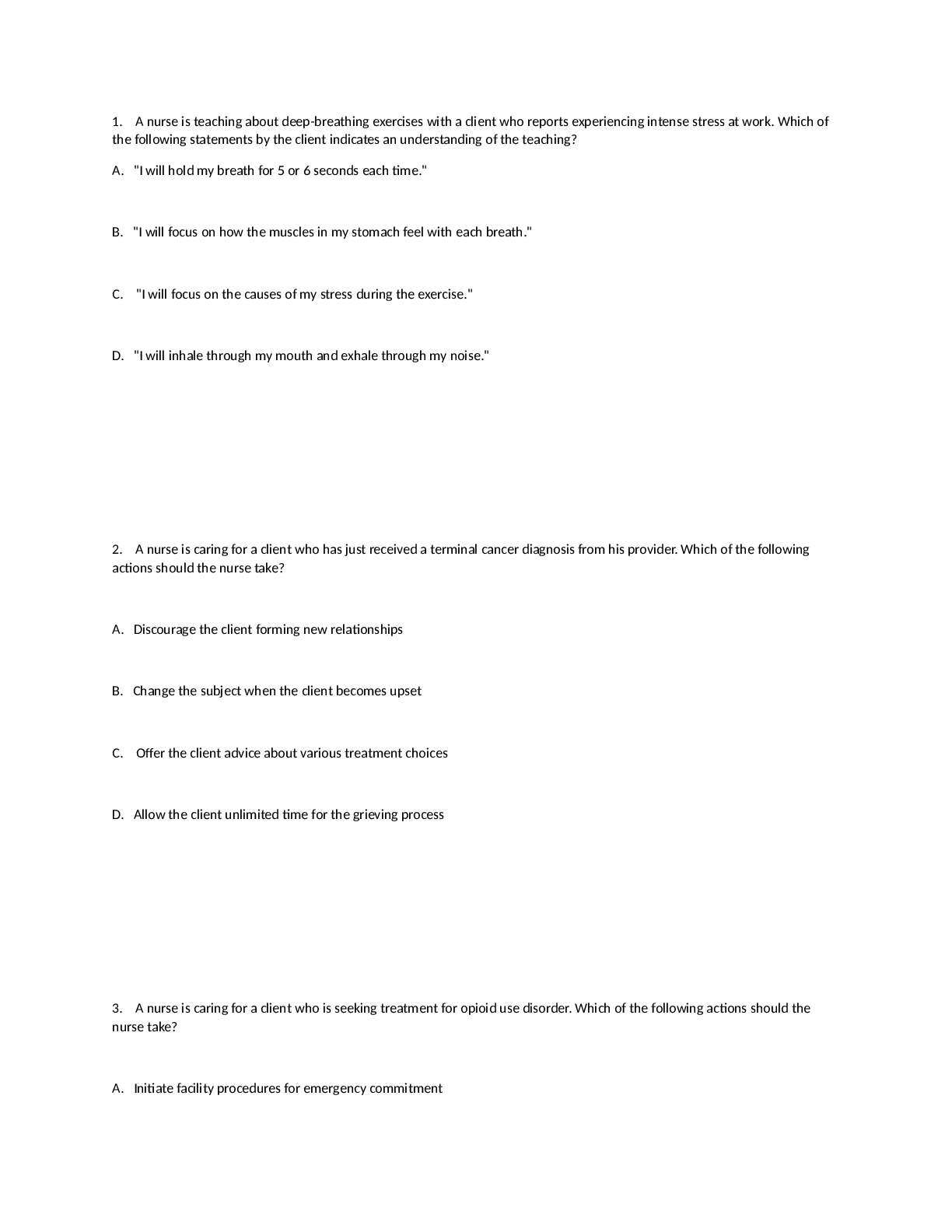
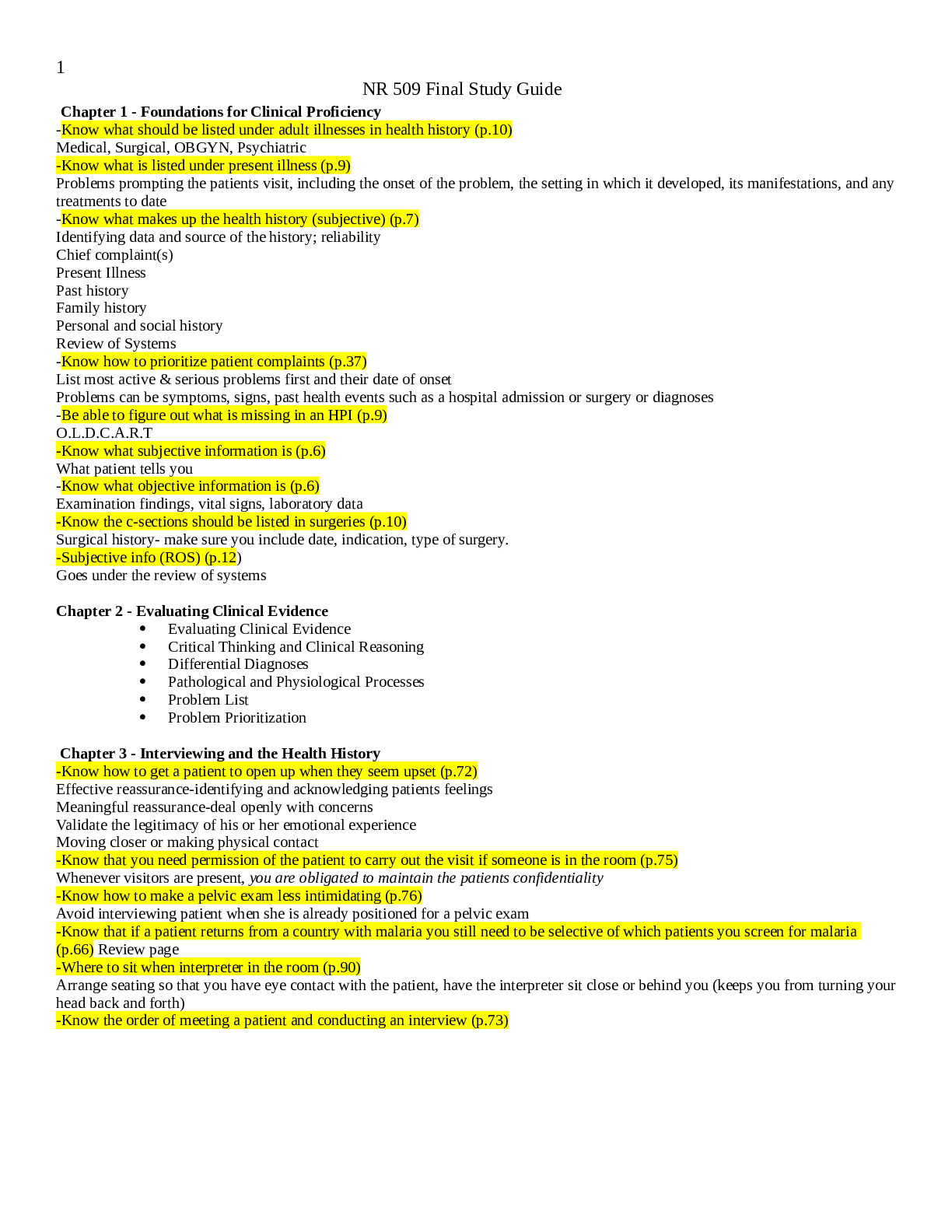

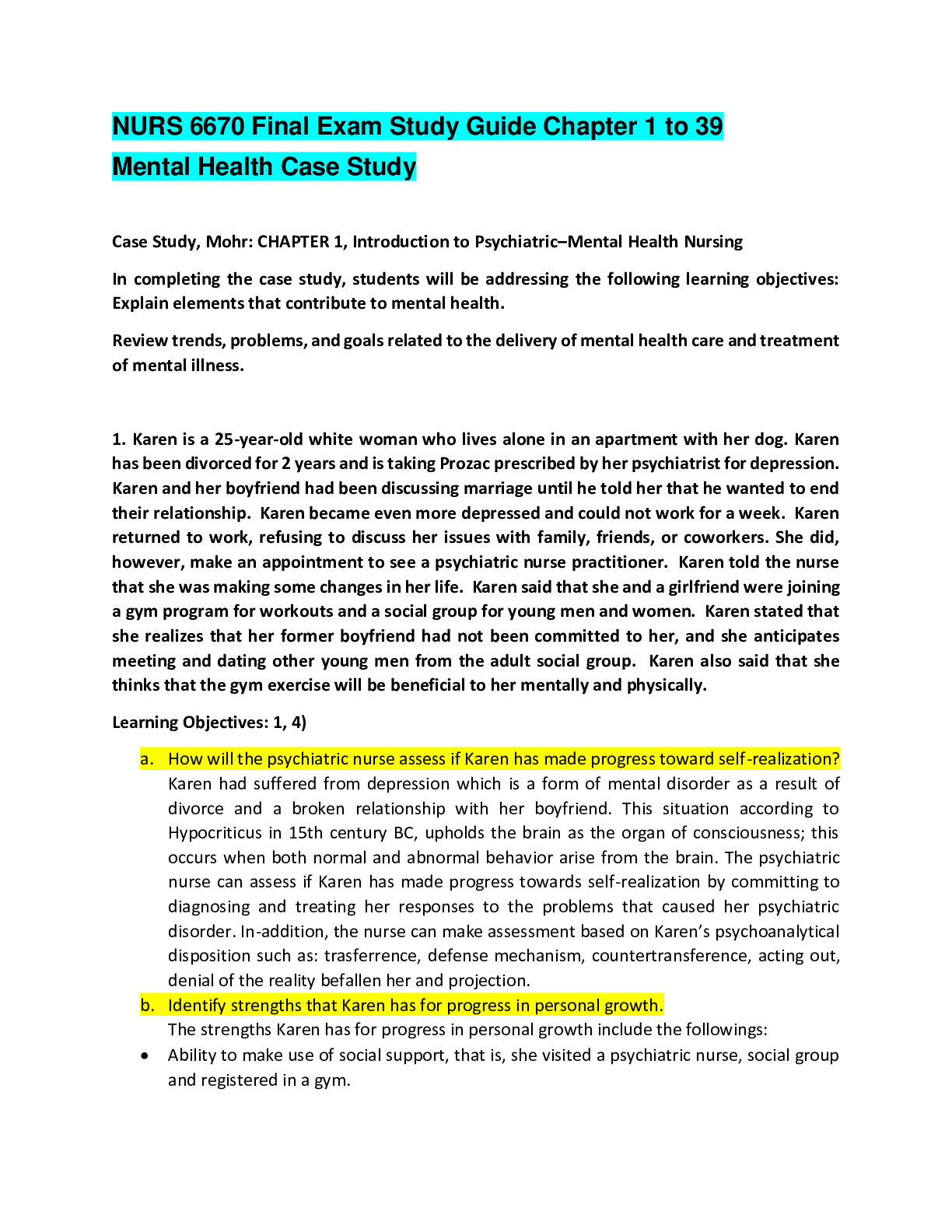
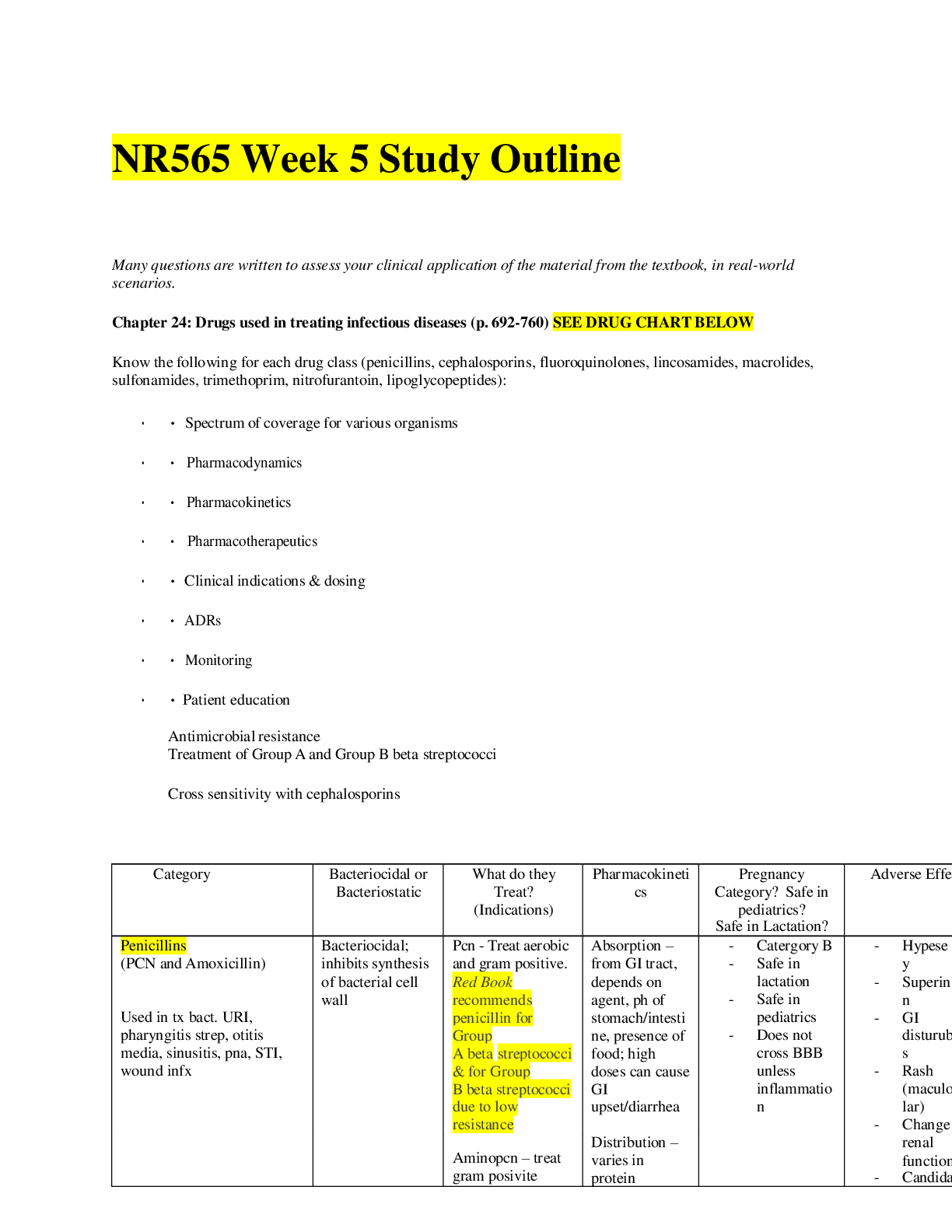
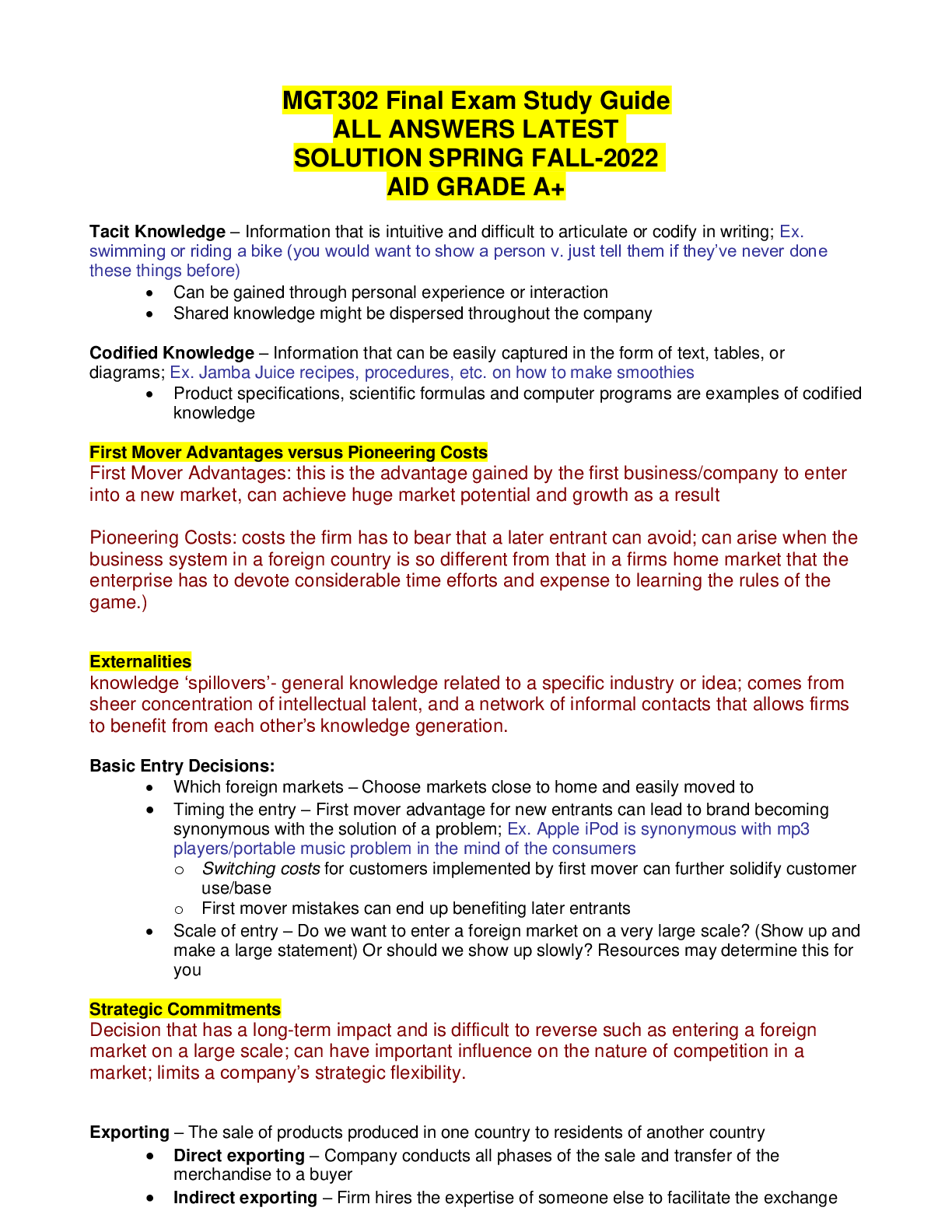
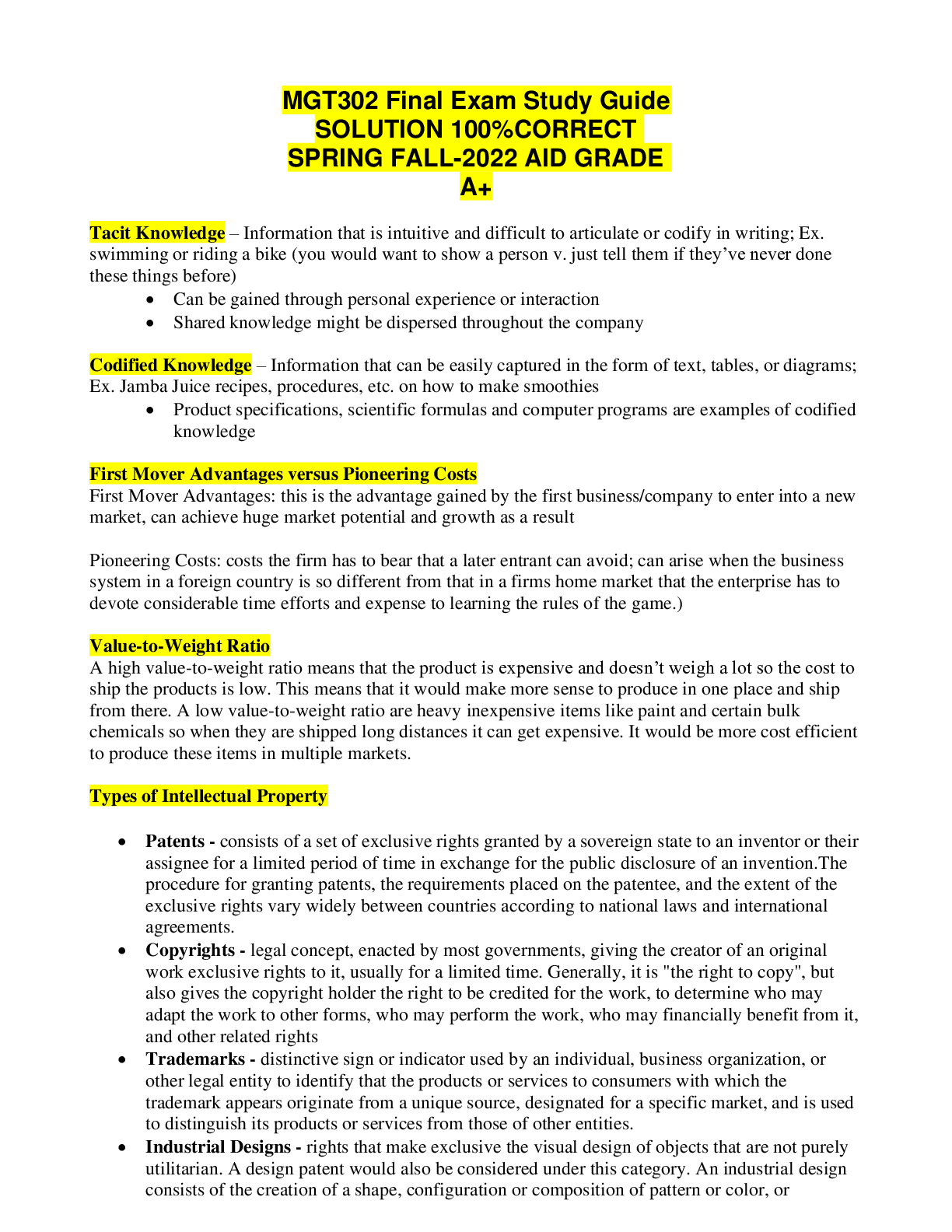
.png)
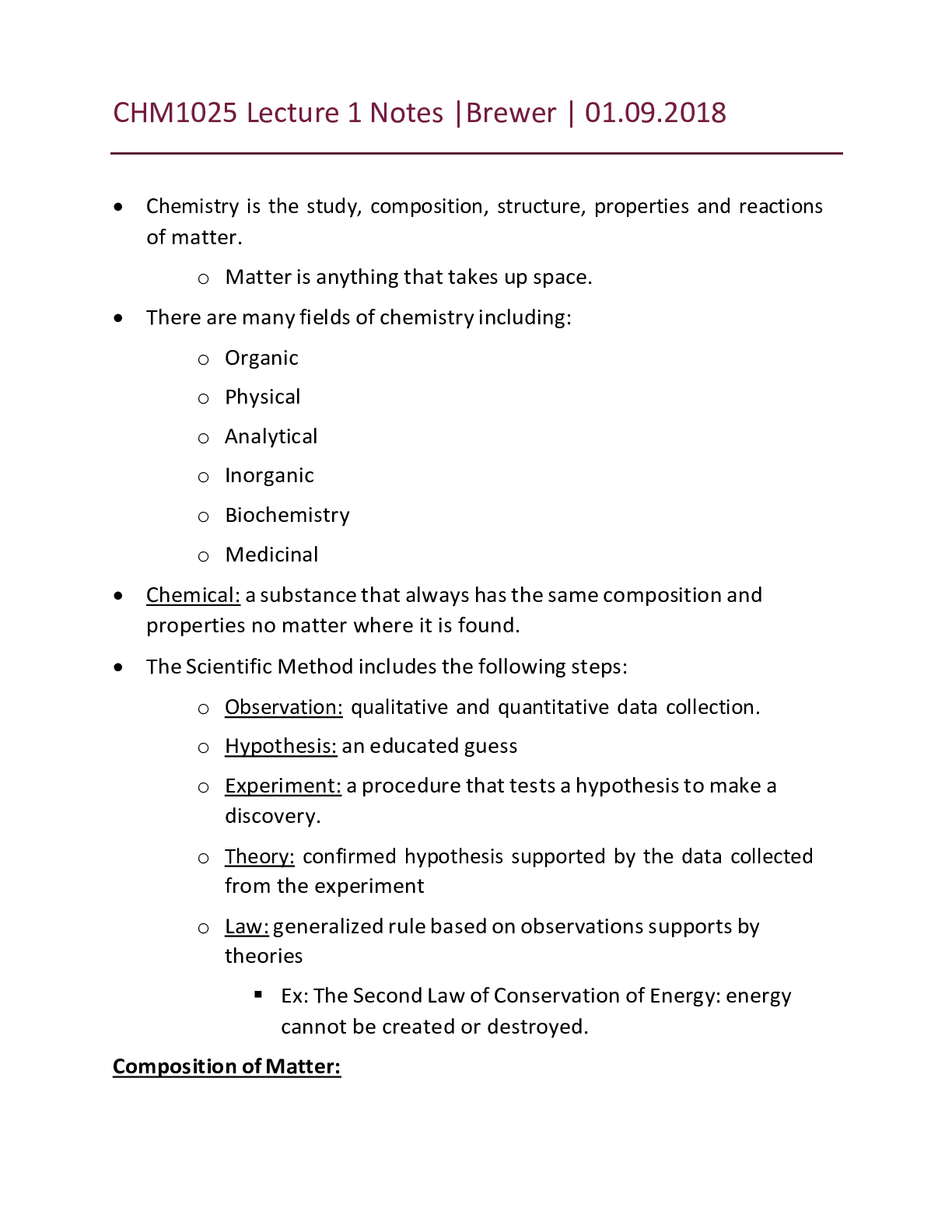

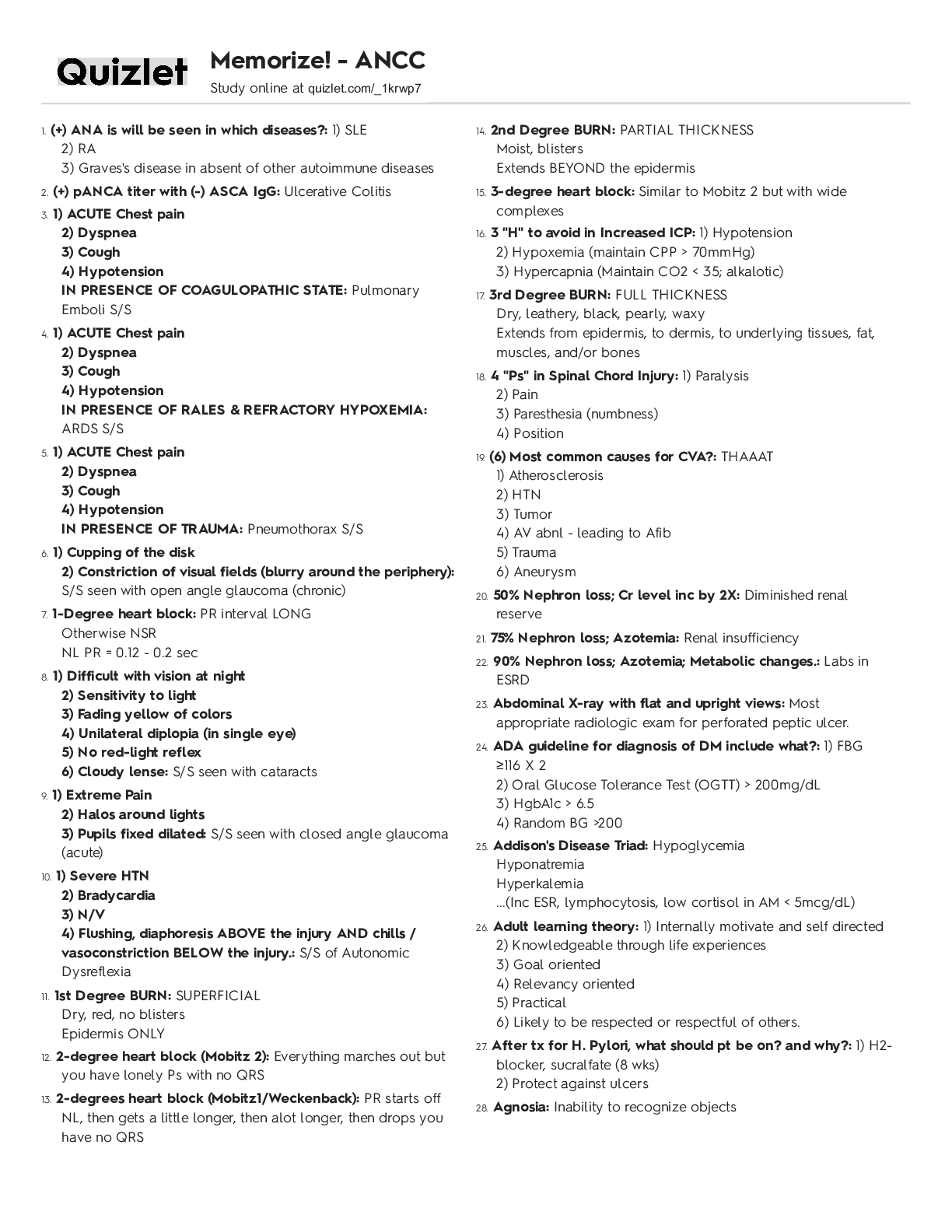
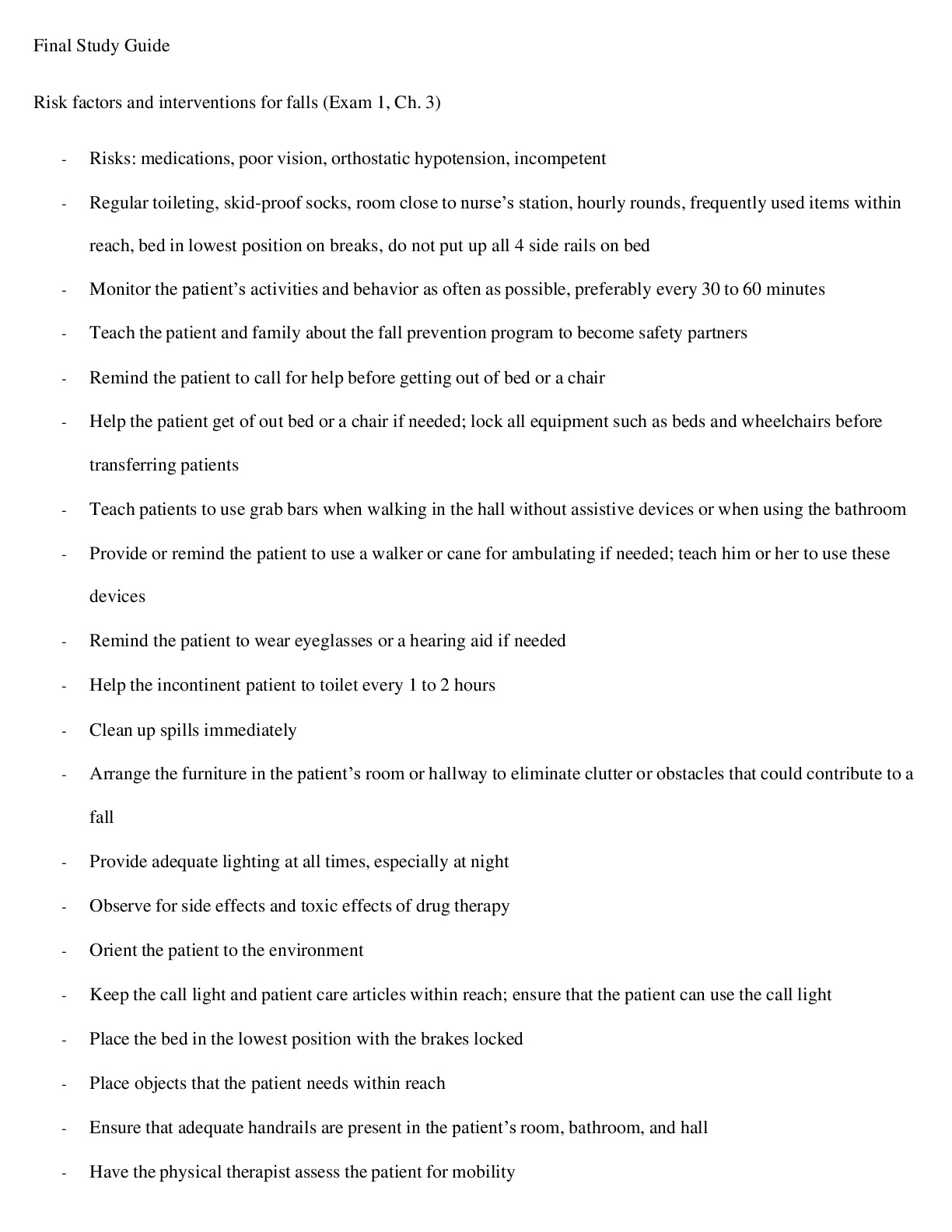

.png)
